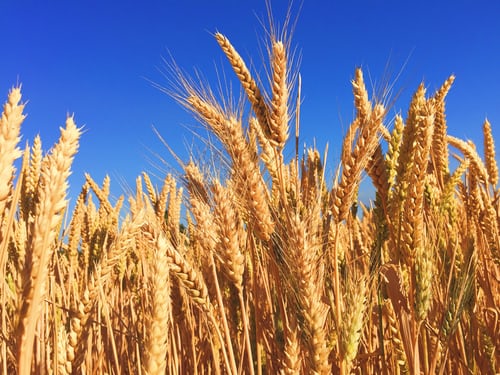Pentecost, while unique, does not stand alone. The work of the Spirit on the Day of Pentecost is a continuation of the work he began in Christ Jesus himself. Luke alludes to this union created by the Spirit between Christ Jesus and his body, the church, when he opens up his second volume, Acts: “In the first book [Luke’s Gospel], O Theophilus, I have dealt with all that Jesus began to do and teach….” (Ac 1.1) The work of Jesus continues through the Spirit in the church.
The union becomes clearer when Luke sets the historical context for the pouring out of the Spirit. He tells us that the Spirit is poured out when “the day of Pentecost had fully come.” (Ac 2.1) Pentecost itself was nothing new to the Jews. The Feast of Pentecost was one of the three major feasts at which all the males of Israel were to appear before the Lord each year (Ex 23.10-19; Lev 23; Dt 16.1-17). Pentecost was feast dependent upon Passover/Unleavened Bread. The name itself, Pentecost or Feast of Weeks, tells us this. The day of the Feast of Pentecost was measured by an event that happened during the Feast of Unleavened Bread. The day after the Sabbath during the Feast of Unleavened Bread, the first day of the week, a firstfruits sheaf of grain was presented to the Lord. This was the beginning of the wheat harvest. From that day seven Sabbaths were counted. On the day after the seventh Sabbath, the first day of the week and fifty days from the presentation of the sheaf of firstfruits, was the Feast of Pentecost. (Pentecost means “fifty.”) Pentecost marked the end of the wheat harvest. The wheat harvest that began during the Feast of Unleavened Bread came to its completion and was presented at Pentecost. One harvest from start to finish. (Paul makes a big deal about this in 1Corinthians 15 when talking about Jesus’ resurrection and ours.)
The Spirit poured out on the Day of Pentecost is not some felicitous coincidence. It is the fulfillment of the types and shadows of the worship-feast cycle in the old creation. Jesus is our Passover lamb, offered up at the time of the Passover. He was raised from the dead on the first day of the week, the day after the Sabbath, during the Feast of Unleavened Bread. He is, as Paul says, the “firstfruits” from the dead. (cf. 1Cor 15.20-28) Jesus is the beginning of the harvest, and there is only one harvest with a beginning and an ending. What happens at Pentecost is the conclusion of the harvest that began in Jesus’ own resurrection.
The one who unites Jesus and his church is the Spirit. The Spirit is the power of God that raised Jesus from the dead (cf. Rom 1.4; 1Tm 3.16) who is now giving life to the body of Christ, the church. The Spirit works in head and body, the total Christ (totus Christus), uniting and energizing the body, moving it to that great harvest to come at the final resurrection of our bodies.
Because we share the same Spirit, we are assured that whatever happens to Jesus happens to the church. It cannot be otherwise. If he has risen, then we will rise. If he has ascended, then we will ascend. There is one harvest and one Spirit. He who began the good work in Christ Jesus will complete it in his church.














